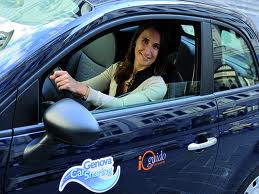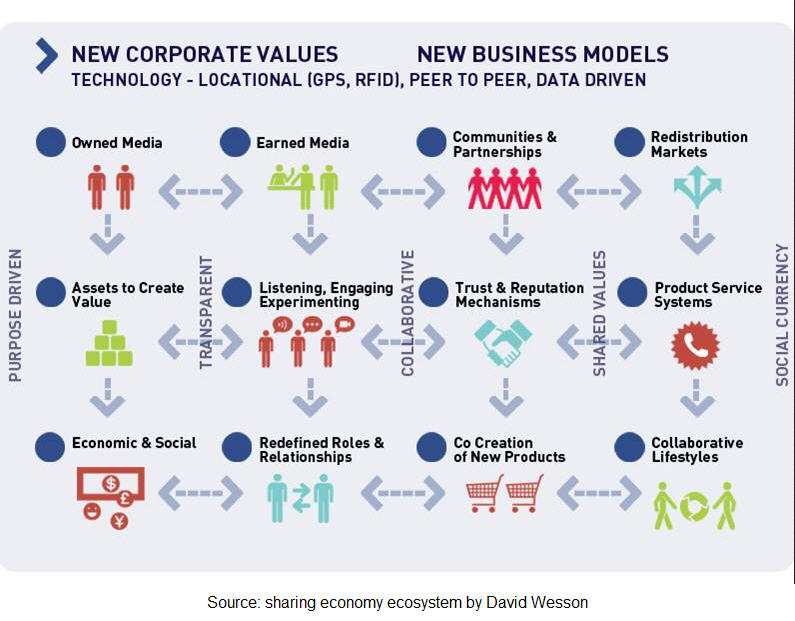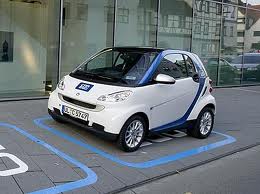 This report on carsharing history, practices and prospects in Italy is contributed by Carlo Iacovini who has been one of the most active figures in the development of the industry in Italy since he became actively involved in planning and developing new carsharing systems in 1996.
This report on carsharing history, practices and prospects in Italy is contributed by Carlo Iacovini who has been one of the most active figures in the development of the industry in Italy since he became actively involved in planning and developing new carsharing systems in 1996.
Why Italy is the right country for car sharing
- Carlos Iacovini, http://greenvalueblog.wordpress.com/
There is a common sense that “sharing economy” will be a growing living model adopted in many sectors, but only few countries will concretely introduce new lifestyles in some sectors of daily living.
 “In 2000, worldwide private consumption expenditures (the amount spent on goods and services at a household level) topped $20trn, a four-fold increase over 1960. Short-term thinking argues that consumption is good for the global economy. However, the financial implications of ecological degradation are increasingly being recognised. A new report (pdf) written by more than 50 scientists, economists and policy experts, for example, has just announced that climate change is reducing global GDP by 1.6 per cent annually. However, out of abundance springs an opportunity in the form of collaborative consumption, a social and economic system made possible by network technologies that moves away from the old industrial economy and enables the sharing and exchange of all kinds of assets.
“In 2000, worldwide private consumption expenditures (the amount spent on goods and services at a household level) topped $20trn, a four-fold increase over 1960. Short-term thinking argues that consumption is good for the global economy. However, the financial implications of ecological degradation are increasingly being recognised. A new report (pdf) written by more than 50 scientists, economists and policy experts, for example, has just announced that climate change is reducing global GDP by 1.6 per cent annually. However, out of abundance springs an opportunity in the form of collaborative consumption, a social and economic system made possible by network technologies that moves away from the old industrial economy and enables the sharing and exchange of all kinds of assets.From Wikipedia to Airbnb, Streetbank to Whipcar, peer-to-peer activity is making waves, harnessing the power of local communities to build a more financially and ecologically sustainable future in ways and on a scale never before possible. These peer-to-peer activities redefine traditional forms of ownership, lending and renting, establishing a strong affinity to the idea of shared access to goods and knowledge, including amongst strangers.
Take car-sharing: cars are financially and ecologically expensive, both in manufacture and day-to-day use. As dense urban streets clog up and parking spaces become more expensive, it makes sense to spread those costs amongst users. The best way to coordinate that? Technology-driven peer-communities to connect suitable sharers together.” (courtesy of The rise of the sharing economy- TESS RILEY ).
Car sharing was born in the ‘90ies as environmental business in many countries around the world (mainly in Europe and US) but different backgrounds brought to radically different successes. Without any technology infrastructures original small cooperative owned the shared vehicles and appointed in a block-notes times and Kilometers run with the car. As the fleet increased new general services were required and operations companies had
 been set up to generate more value and became a profitable business, thanks to economy of scale coming from technology and standard services. Today Mobility international (swiss car sharing brand) is owned by its 46,000 members, and has a total of 102,000 customers, and is still expanding its clientele. The long-term success of the company is linked to the economic, social and ecological value its adds to the community.
been set up to generate more value and became a profitable business, thanks to economy of scale coming from technology and standard services. Today Mobility international (swiss car sharing brand) is owned by its 46,000 members, and has a total of 102,000 customers, and is still expanding its clientele. The long-term success of the company is linked to the economic, social and ecological value its adds to the community.Economic business model faced different international strategies. US car sharing companies traditionally operated in an adverse market, considering slow price of fuel and low attitude to share cars but they focused on private economic benefits, glamour vehicles, targeted to Campus Universities and typically second car users. The mix was successful and Zipcar story is well known.
Some European companies had similar approaches and the future seems to be very positive. “The European market for Car Sharing services continues to grow at an unprecedented rate; between 2008 and 2011 saw almost a 60 per cent increase in subscribers from 500,000 to more than 800,000 members of either a “Traditional” or “Peer to Peer (P2P)” Car Sharing service.
Car sharing business model – Frost&Sullivan analysis
According to Frost & Sullivan analysis, this trend is set to continue, with a forecast 15 million traditional Car Sharing members and another 750,000 P2P Car Sharing members by 2020, representing a 40% compound annual growth rate (CAGR) for traditional and 20% CAGR for P2P Car Sharing. This is a trend that hasn’t gone unnoticed by vehicle manufacturers (OEMs) and indeed several other organizations and is leading to convergence of the market and business models, posing several opportunities and challenges to businesses ahead.” (European Car Sharing, Boom Continues – Martin Briggs – Smart Mobility Management)
Italy had a slightly different approach, closer to the public transport business. To support small cities to establish a car sharing scheme a national consortium was funded by Italian ministry of Environmental. ICS (Iniziativa Car Sharing) created a national standard framework to support local cities with common services. Each City/Province identified a local company (public/private owned) to run the operations according to required standards. Same technology, call center, brand and communication, type of fleet, in order to develop a national platform for Italian customers. Second owned car was the first target addressed together with business operators for goods delivery. According to legal research, car sharing was a complementary public transport service and city’s governments allow cars to park for free, generally in dedicated parking slots, to enter in No traffic Zone without any traffic limitations, generally using taxi and buses reserved lines. These would be great mobility advantages for customers but also great value for operating companies.
Months ago I was talking with a top manager from ZIPCAR and he was surprised about the opportunity of running car sharing schemes with all these advantages compared to typical US city approach where mobility incentives and benefits are not so usual. Today car sharing is more international, big companies are facing the new deal to integrate it with other business model. Than what shall happen in Italy?
Italian market is really fragmented; the national service is available in 16 cities with 12 small companies, not very profitable with slmost 20.000 users with 600 cars and 400 parking slots. Plus we have to consider the electric pilot service run in some train stations in Lombardia Region, by the E-vai brand. It is not big result if we consider the background and the huge effort put into the service by managers, public authorities and operating companies. On the other hand it is important to underline that the market is ready to speed up because start up investments and legal, administrative framework are well established. Italy only needs a good and bigger operator to make synergies and to integrate services.
Let’s see some options:
Car2go is coming to Italy and presents a strong branded scheme. Free flow car sharing,
 suitable to big cities (only few ones in Italy suits to its model), driven by marketing and technology innovation. The scheme is based on a strong vision of future mobility by Daimler and in the future will be a part of a complete offer of mobility services. At this time the service guarantees high easy-to-do service successful in many European and American cities. Critics say it’s a good commercial strategy for Smart and the service has limited target considering car sharing users need different types of vehicles. It is true but story teaches that technology, innovation and marketing mix can be a successful business (for example Apple). But finally It should open to small cities business model to a wider spread into Italian market.
suitable to big cities (only few ones in Italy suits to its model), driven by marketing and technology innovation. The scheme is based on a strong vision of future mobility by Daimler and in the future will be a part of a complete offer of mobility services. At this time the service guarantees high easy-to-do service successful in many European and American cities. Critics say it’s a good commercial strategy for Smart and the service has limited target considering car sharing users need different types of vehicles. It is true but story teaches that technology, innovation and marketing mix can be a successful business (for example Apple). But finally It should open to small cities business model to a wider spread into Italian market.Zipcar (“Avis Zipcar” now) would be the perfect player. Big company, international
 vision, the group can count now on a wide and deployed organization around the country. The acquisition of Zipcar is a convinced decision to enter into the car sharing from the main door.
vision, the group can count now on a wide and deployed organization around the country. The acquisition of Zipcar is a convinced decision to enter into the car sharing from the main door.Many stakeholders argue that Zipcar could lose its nature but I think AVIS management will necessary maintain the business model to make the service profitable, unless they will decide to integrate it into conventional model… but how can an “old” business model make money and develop an “innovative” one? We believe that under the ZIPCAR brand Avis will get many new customers.
Italy would be a good field of trials, considering that among the 16 cities, many of them have small fleets and local cities might appreciate the opportunity of transferring to private companies the operations. With a more efficient organization the results would be much better. On the other hand the new company would have all legal, administrative and mobility benefits to push services to new customers. It’s a point of how to define and deploy the appropriate strategy to the market.
Some national business companies could also bring to a different development. Car sharing is a part of the mobility network. Then some national transport operator could put some investment to integrate the mobility chain, creating a dedicated operative department.
Trenitalia for example (national railways company) could be one alternative,
 specially considering that it already makes commercial agreement with the national consortium ICS. German Railways DB Bahn directly owned car sharing brand, as Switzerland does. Local public transport operators wouldn’t have the strength to national investments, specially considering the economic crisis they are facing to.
specially considering that it already makes commercial agreement with the national consortium ICS. German Railways DB Bahn directly owned car sharing brand, as Switzerland does. Local public transport operators wouldn’t have the strength to national investments, specially considering the economic crisis they are facing to.Automotive’s sector could find a new opportunity to develop its traditional business into a new model. According to recent research presented by Ford “The data shows that the disownership trend is an emerging trend, with 39% of clients happy to ‘disown’ their possessions. This trend has the potential to be a key influencer on the way business models are structured in the future”.
Considering the big crisis the sector is facing in Europe, the development of car sharing business model could be a long path strategy to increase incomes once the market will start to come out. Fiat launches a
 pilot project “Fiat LikesU” to introduce car sharing into some Universities to test student’s opinions. It’s not much but a good start point compared to other brand launching their own car sharing services (Bmw, Renault for example).
pilot project “Fiat LikesU” to introduce car sharing into some Universities to test student’s opinions. It’s not much but a good start point compared to other brand launching their own car sharing services (Bmw, Renault for example).This year could be the cutting edge of car sharing growth, in Europe as well as in Italy, not a sharing economy revolution yet, but still one first right steps further.
# # #
About the author:
 In 1996 Carlo Iacovini designed an electric vehicle car sharing scheme. but it was too early. Now with 14 years experience in management consulting, private and public companies, founder and chairman of NGO, responsible of international research projects in sustainable business. he recently focused his efforts in electric mobility and new ideas to improve city's quality... to post them in his blog at http://greenvalueblog.wordpress.com/
Print this article
In 1996 Carlo Iacovini designed an electric vehicle car sharing scheme. but it was too early. Now with 14 years experience in management consulting, private and public companies, founder and chairman of NGO, responsible of international research projects in sustainable business. he recently focused his efforts in electric mobility and new ideas to improve city's quality... to post them in his blog at http://greenvalueblog.wordpress.com/
Print this article





Antonio Lopez writes:
ReplyDelete"Interesting. We have a car share space a block from the apartment, which is right at the bus stop. I never use it because it's easier to take the bus (parking is the big nightmare in Rome). But it's encouraging that this option exists."